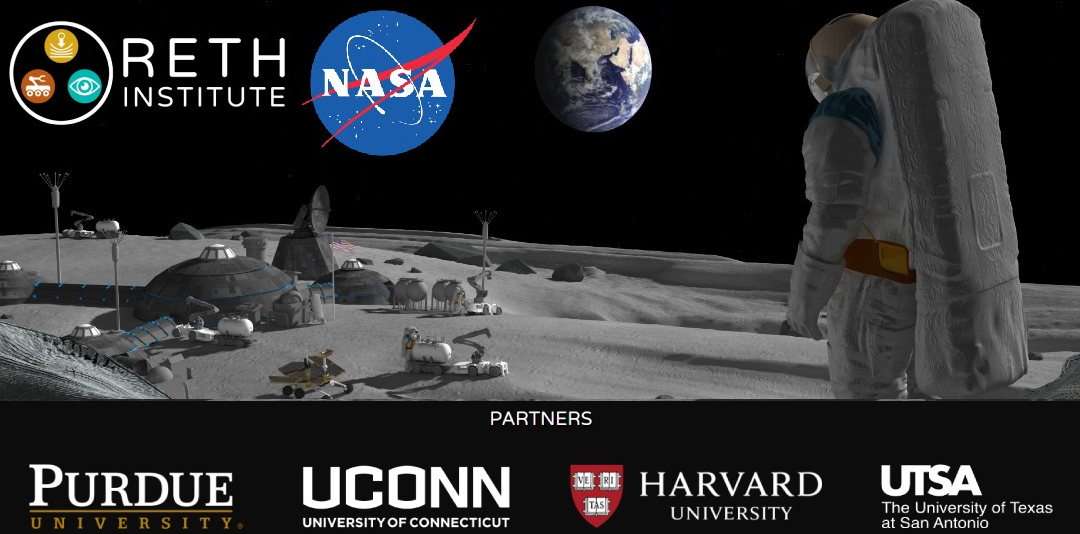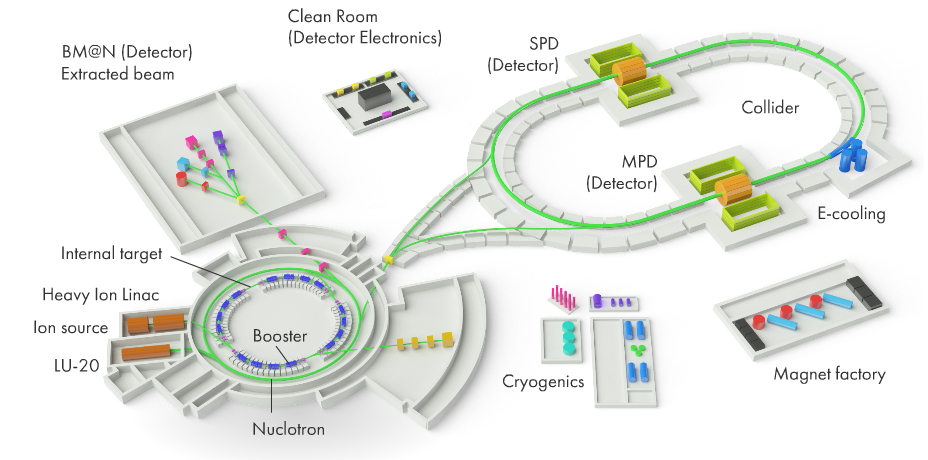Projects
Resilient Extra-Terrestrial Habitats (RETH)

Deep space habitats require groundbreaking technological advances to overcome the unprecedented demands introduced by isolation and extreme environments. An Earth-independent permanent extraterrestrial habitat system must function as intended under continuous disruptive conditions that occur during both manned and unmanned conditions. Designing for the demands that extreme environments will place on long-term deep space habitats, such as wild temperature fluctuations, galactic cosmic rays, destructive dust, meteoroid impacts (direct or indirect), vibrations, and solar particle events, represents one of the greatest challenges in this endeavor. The goal of the project is to develop and demonstrate transformative smart autonomous habitats and related technologies that will adapt, absorb and rapidly recover from expected and unexpected disruptions to deep space habitat systems without fundamental changes in function or sacrifices in safety. Incorporating a system resilience approach will be the turning point in achieving permanent deep space habitats. [Project Webpage]
Human-Drone Interaction through a Tactile Wearable

Recent technological advancements can make it possible to deploy a single robot or a swarm of robots in real-life scenarios such as mining , bridge inspection, search and rescue, space applications, etc. Fully autonomous flight is suitable for many of such missions. Recent advancements in the field of computing might provide robust autonomy. However, in mission-critical scenarios, human presence in the system is still needed to 1) recognize and mitigate shortcomings of the autonomy; 2) have available “out-of-band” information not accessible to the autonomy and that can be utilized to increase performance; 3) convey changes in intent as mission goals change. The aim of the project is to develop robust and natural interaction techniques to achieve a smooth and safe guiding of a single or multi-robot system. [Papers], [Project Videos]
Balloon Satellite for Testing Solar Cells in High Altitude

Balloon Satellite mission was for testing solar cells at high altitudes. The success criteria of the mission were as follows: 5 independent measurements of current, voltage and temperature of solar cell (CVT) shall be conducted and logged; system shall be able to measure and log the altitude of the spacecraft with precision of 5 m; single CVT measurement shall not last longer than 500 ms; system shall be able to measure and log the current produced by the solar cell array with a precision of 1 mA; system shall be able to measure and log the voltage produced by the solar cell array with a precision of 10 mV; system shall be able to measure and log the temperature of the solar cell array at with a precision of 0.1 °C.Model-Based Systems Engineering (MBSE) techniques were applied to meet these criteria by putting concepts and architecture, requirements, detailed design, implementation, integration, test and verification, systems verification, and validation on the "V-Model." The helium balloon took the satellite to 33km before it exploded. The satellite and recorded data were retrieved successfully. [Project Video]
Gas Leak Detecting Mobile Robot for NICA Collider

NICA (Nuclotron-based Ion Collider fAcility) is a particle collider complex constructed to perform experiments such as Nuclotron ion beams extracted to a fixed target and colliding beams of ions, ions-protons, polarized protons , and deuterons. The projected maximal kinetic energy of the accelerated ions is 4.5 GeV and 12.6 GeV for protons. The cooling system of the collider in the tunnels is based on nitrogen gas. Detection of the leakage is critical for the functionality of the collider. However, human presence is strictly forbidden in the tunnels due to radiation safety concerns. Therefore, the projects aimed to build a semi-autonomous mobile robot that navigates around the elliptical collider to detect low-temperature gas leaks using a thermal camera. The robot navigates through a pre-determined route, detects gas leaks, and notifies the users on the interface screen. [Project Webpage]